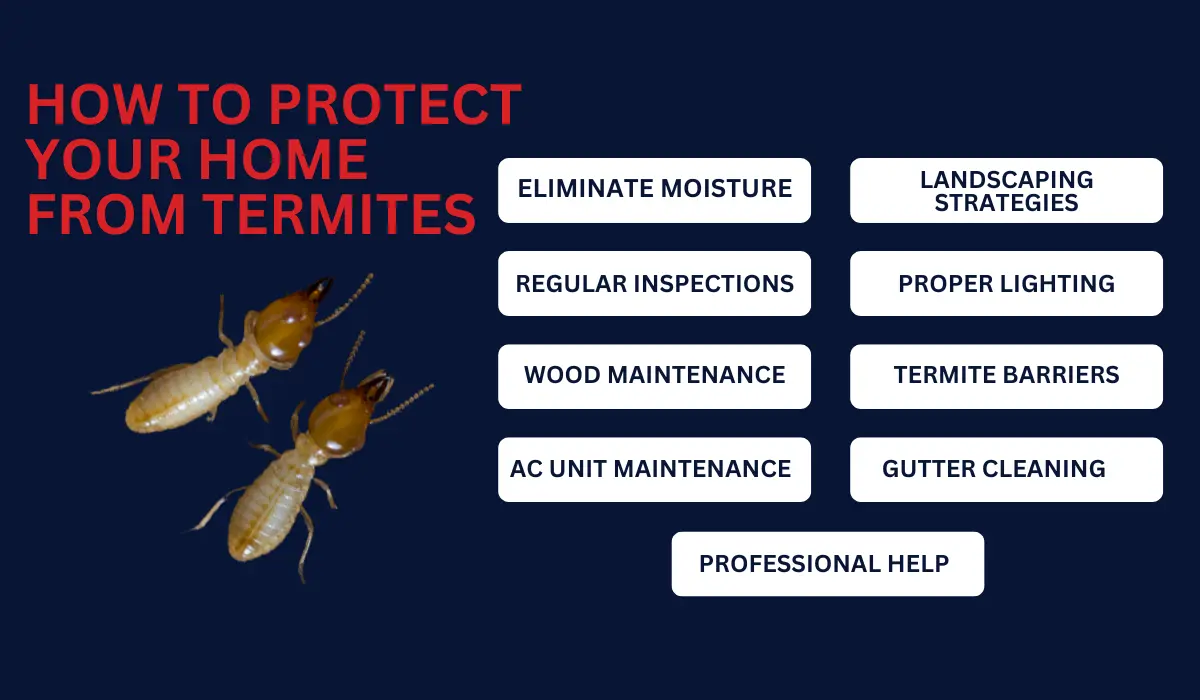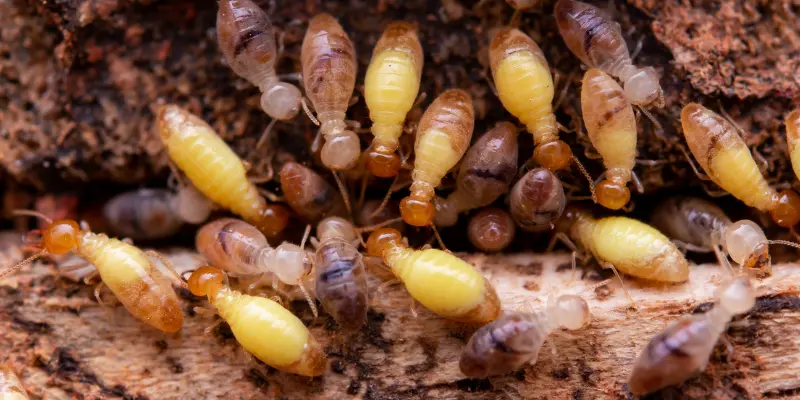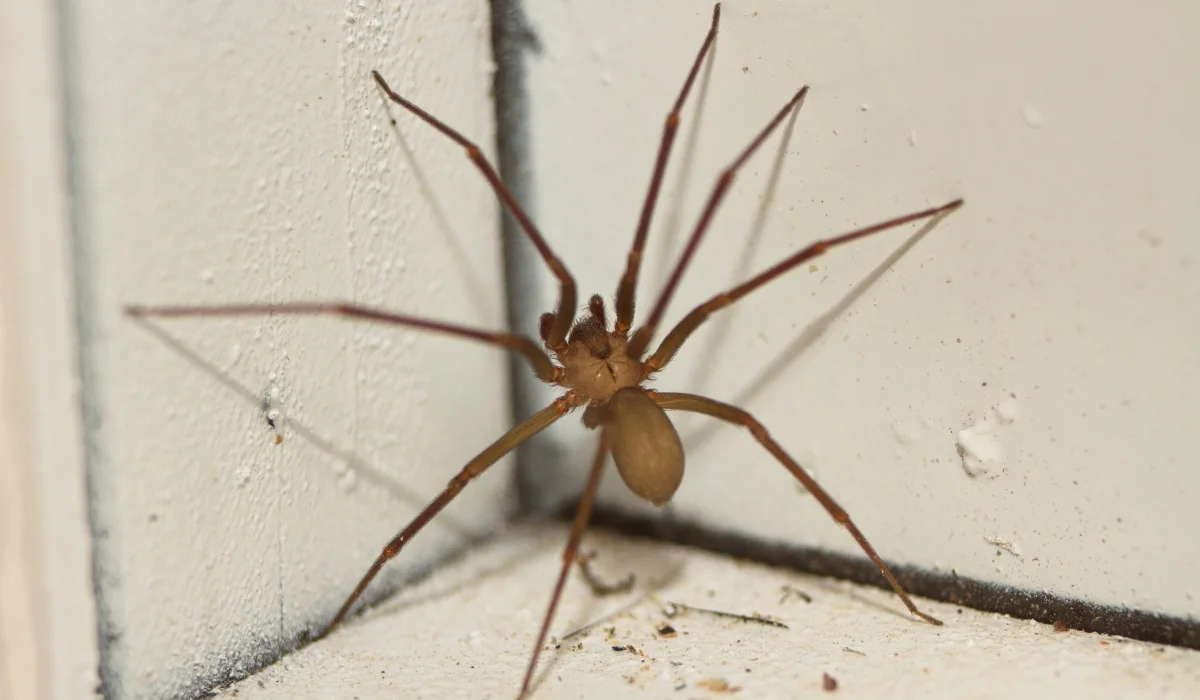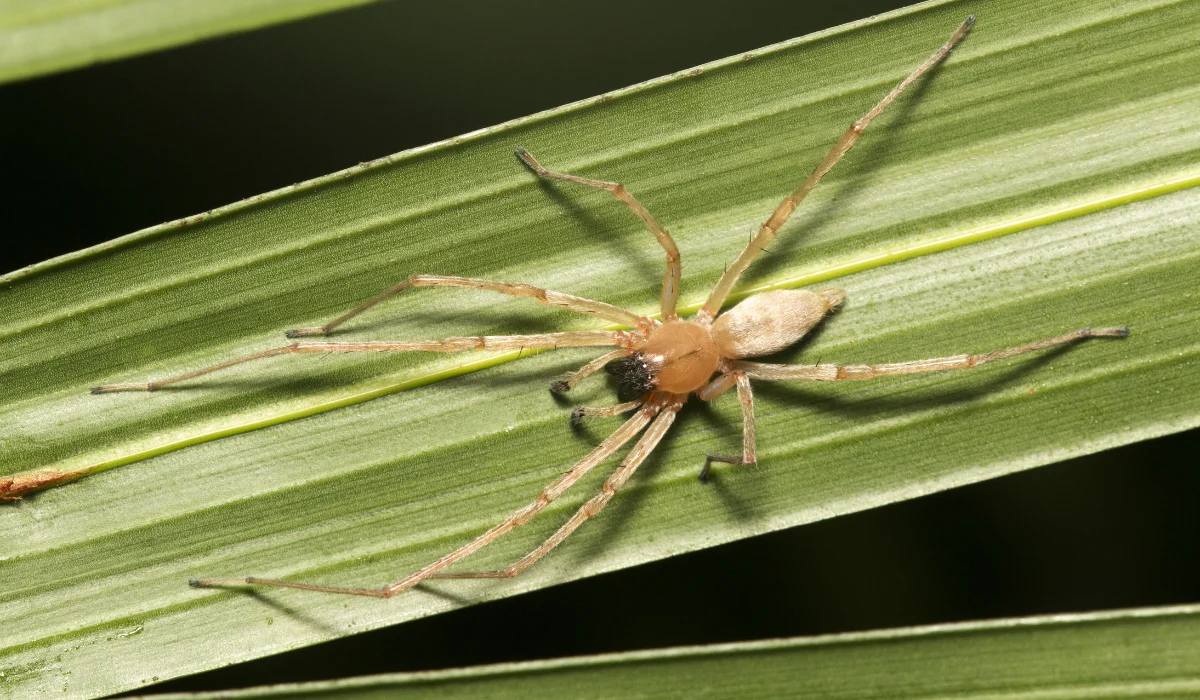In Louisiana, termite trouble spikes with the warmth, from spring to fall. These pests love the state’s humid vibe, making homes their target.
Watch out starting from March to April when termites look to grow their families. Late spring brings swarms of these winged invaders, signaling danger.
Think your place is in their sights? Getting ahead with a pro check can keep your home safe from these unwelcome guests. Stay sharp and guard your space!
Key Takeaways
- In Louisiana, termite swarming season peaks in mid-May, with species like Formosan and Drywood termites active from April to November.
- Protecting your home from termites involves eliminating moisture, maintaining landscaping, conducting regular inspections, and considering professional termite barriers.
- Early signs of termite damage include wood damage, mud tubes, and clicking sounds inside wood, signaling the need for professional inspection.
- Professional termite control methods range from no-tent control and bait stations to tent fumigation, with tailored solutions for severe infestations.
WHEN DO TERMITES SWARM IN LOUISIANA?
Swarming is a phase in the termite lifecycle when swarmers (winged termites) emerge to start new colonies.
In Louisiana, cities like Lake Charles face termite swarming season peaks around Mother’s Day in May. However, these pests can be active year-round, even during the colder winter.
Flying Termite Swarming Season
Entomologists at LSU AgCenter suggest that termite swarms vary each year based on the type of termite and environmental factors.
| Termite Species | Swarming Season |
| Drywood Termites | May – November |
| Formosan Subterranean Termites | April – June |
HOW TO PROTECT YOUR HOME FROM TERMITES

To keep swarms of termites at bay, homeowners like you should prioritize creating a hostile environment for these pests. Here’s how you can do so:
- Eliminate Moisture: Repair leaky faucets and water pipes. Ensure gutters are clean to avoid water accumulation around the foundation.
- Landscaping Strategies: Keep mulch, a food source rich in cellulose, at least 12 – 18 inches from the foundation. Trim back any vegetation touching the home.
- Regular Inspections: A control company can provide professional checks for termite activity. They’re vital to catch early signs of infestation.
- Proper Lighting: Use outdoor lights sparingly, as they can attract termites. Consider off-ground or LED lights to minimize attraction.
- Wood Maintenance: Store firewood away from the home and keep wooden structures like decks in good repair to avoid offering food to termites.
- Termite Barriers: Invest in physical or chemical termite barriers as part of thorough termite treatments. These can significantly deter entry.
- AC Unit Maintenance: Repair leaky air conditioning units promptly to prevent water from pooling around your home’s foundation.
- Gutter Cleaning: Regularly clean your gutters to prevent clogs, which allow rainwater to accumulate and potentially seep into your home’s roof and walls.
- Professional Help: A pest control service can administer tailored termite prevention programs and offer advice on your situation’s best termite control options.
HOW TO IDENTIFY AND ADDRESS TERMITE DAMAGE
Before calling for professional help, recognize the early signs of flying termite damage to save you extensive repair costs and structural headaches.
Identifying Signs of Termite Damage
Here’s how you can spot the pesky intruders from starting a termite infestation:
- Drywood termite pellets
- Wood damage
- Tiny kick-out holes
- Mud tubes
- Clicking sounds inside the wood
- White-winged insects
- Termite droppings
- Discarded termite wings
- Water damage-like appearance
- Honeycomb indents
- Splintering wood beams
TERMITE TREATMENT OPTIONS
Professionals offer a range of solutions, from time-tested approaches to cutting-edge treatments that prioritize environmental safety.
Here’s an overview of the termite control methods at LaJaunie’s Pest Control:
| Termite Control Method | Description |
| No-Tent Termite Control | Pesticides are applied in soil around structures. |
| Bait Stations | Systems that use bait to lure and poison termites in termite colonies. |
| Termite Inspection | Measuring your home and recognizing the signs of termite problems. |
| Tent Fumigation | Encasing and treating an entire structure with gas. |
| Termite Trenching | Applying heat to infested areas to kill termites. |
| Termite Pre-Treatments | Including a blue dye so that building inspectors can verify the treatment was applied correctly |
WHEN TO CALL A TERMITE EXPERT
Spotting a lone termite is no party for homeowners. But when does that sighting mean it’s time to call in the professional pest control experts? You must keep their eyes peeled for these telltale signs:
Whether you’re in Baton Rouge or New Orleans, seeking expert help should be easy. For immediate intervention for a severe infestation, let Lajaunie’s termite control specialists tailor a solution that’s right for your home.
For more information about the areas we service, visit our location page.
 By: LaJaunie's Pest Control
By: LaJaunie's Pest Control 


